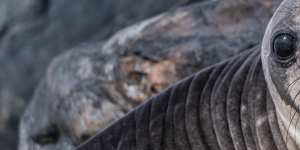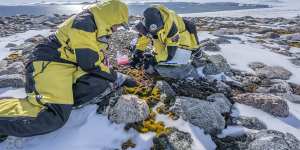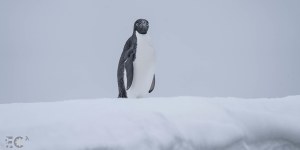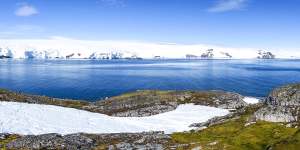The findings are based on new research conducted by an international team from the United Nations Environmental Effects Assessment Panel,and led by University of Wollongong climate change biologist Professor Sharon Robinson.

Fur seal pups are at increased risk of skin cancers and sunburn,scientists have warned.Emiliano Cimoli
For the past four years,the ozone hole above Antarctica has failed to close before summer,causing UV radiation levels in Antarctica as extreme as 14 – similar levels to a Sydney summer.
Robinson said the main causes were twofold:volcanoes and bushfires.
Two massive volcanic eruptions – Hunga Tonga in 2022,and La Soufrière between December 2020 and April 2021 – spewed dangerous levels of sulphates into the stratosphere,which broke down ozone in the southern hemisphere.
“But the other thing that’s happened,which was human induced,or climate-change induced,was the 2019-20 bushfires,which were so strong and so fierce that they injected aerosols into the stratosphere and broke down ozone,” Robinson said.

Distinguished Professor Sharon Robinson and a colleague in the moss beds at Casey Station.Emiliano Cimoli
The Montreal Protocol,finalised in 1987 and which came into effect in 1989,banned the use of ozone-depleting chemicals. It was the first international protocol to achieve universal ratification by every country in the world.
But the two eruptions,Black Summer and – to a lesser extent,rocket launches – have set back decades of recovery to the hole in the ozone layer above Antarctica,creating UV radiation levels more than twice as high as those measured during the 1970s.
“Whilst ozone is recovering,we’ve seen these four years of ozone holes that have been large but also have[stayed open] into December,which is the thing that’s most concerning for us as biologists,” Robinson said.
“Because that’s when most of the life comes to life in Antarctica each summer. In the winter,everything’s under snow and ice.”

Antarctic animals like this Adelie penguin are at higher risk of suburn and even skin cancers,scientists have found.Emiliano Cimoli
Robinson and her team,who publish their findings inGlobal Change Biology on Friday,warn that UV levels had been recorded at dangerously high levels in summer.
“[In] December in the southern hemisphere,the sun is much higher in the sky and the radiation coming down to Earth is higher,” she said.
“We’re seeing a UV index of 14 in Antarctica in December,up from pre-ozone hole levels of six. A UV index of 14 is extreme – what we’d experience during summer in Sydney or San Diego.”
At these levels of UV,humans are at increased risk of developing skin cancers and cataracts. The effects of extreme UV levels on animals depend on their individual vulnerabilities.

The sun beams down on a glacier field site in Antarctica.Andrew Netherwood
Of concern to researchers is the fact the ozone hole has been open at the start of summer,coinciding with the peak breeding season for penguins and seals.
The team said increased UV radiation in early summer could be “particularly damaging” to penguin chicks and seal pups,both of which are on the ice in late spring.
“We know that if krill are exposed to high UV radiation,then they will tend to move down deeper into the ocean and the phytoplankton that they feed on will have to make sunscreens in order to avoid damage from the UV.”
The ozone-depleting effects of bushfire emissions do dissipate over time,Robinson said.
“But the problem is that with climate change,one of the things we’re seeing is more frequent bushfires ... we’ll always have bushfires,but we’re having more of them because it’s drier and warmer and the weather conditions are more extreme.
“The biggest thing that we can do to help Antarctica is to act on climate change – reduce carbon emissions as quickly as possible so that we have fewer bushfires,and we don’t put any additional pressure on ozone layer recovery.”
Get to the heart of what’s happening with climate change and the environment. Our fortnightly Environment newsletter brings you the news,the issues and the solutions. Sign up.